Mary Lee Duff, LEED AP, IIDA | Director of Ecos Studio
&
Diane Rogers, AIA, Well AP | Senior Strategist
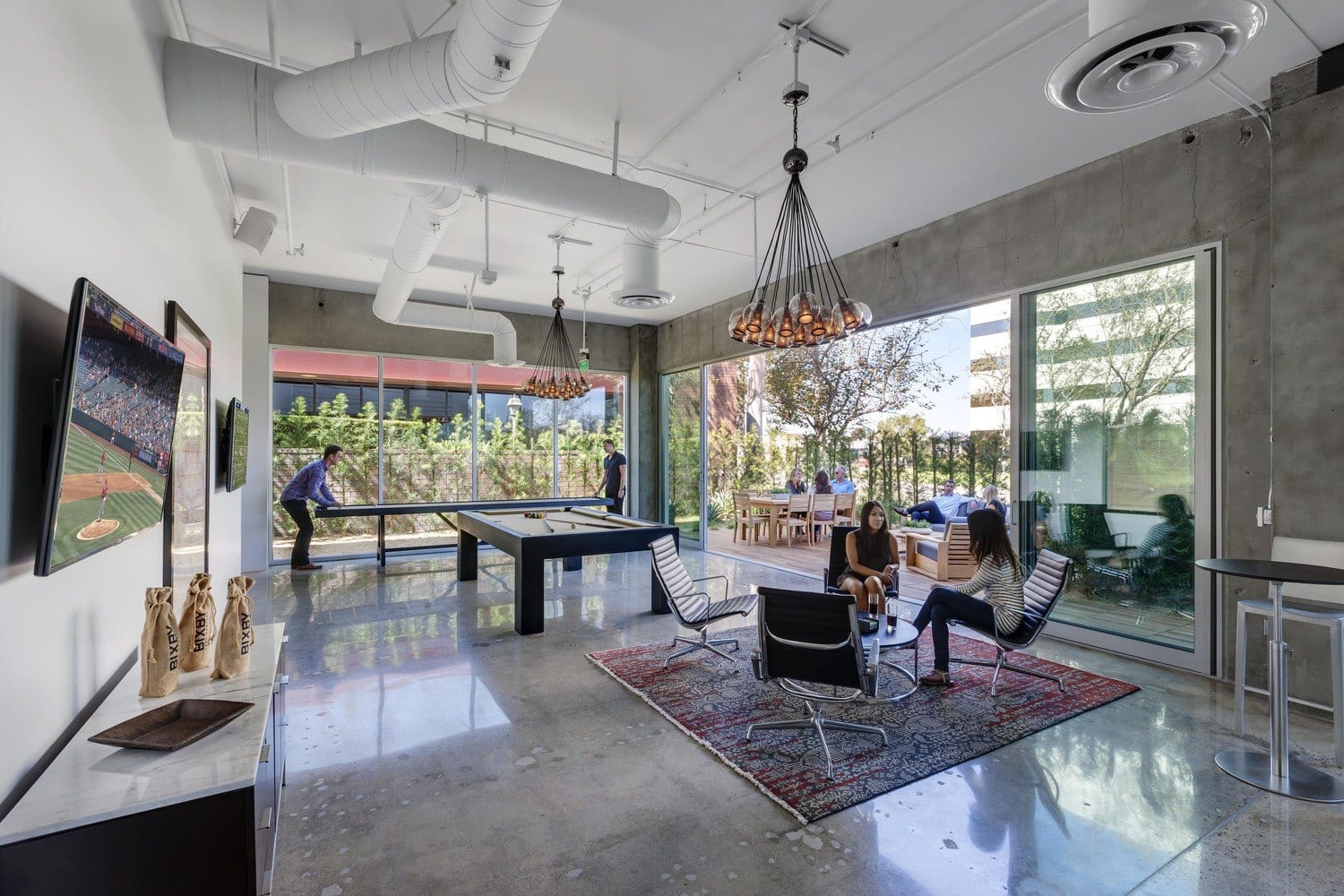
Providing options that encourage staff movement throughout the day is a strategy for managing thermal comfort. Bixby Land Company, Newport Beach, CA. Photography © RMA Architectural Photographers.
This is the second in a two-part series that considers some of the topics presented at the 2018 Academy of Neuroscience for Architecture attended by IA Senior Director of Strategy Mary Lee Duff, Assoc. IIDA, LEED AP, and IA Senior Strategist Diane Rogers, AIA, Well AP which support IA’s position that the human experience in the built environment will be a central design focus in 2019.
At the event, held every two years at the Salk Institute in La Jolla, California, attendees participate and listen for two and a half days to speakers representing two realms: neuroscience and architecture. The conference focuses on how the neuroscience behind architecture impacts human behaviors, moods, and productivity, with the understanding that, as professionals, architects focus on creating inspiring, aesthetic, and structured environments, and neuroscientists focus on how the brain responds to stimuli and the structure of the environment.
In part one, we covered some of the key findings on how the study of neuroscience informs design concepts in architecture. As we better understand the science behind why we respond to certain elements found in nature, we increasingly apply that understanding to designing more effective spaces for the human experience in the built environment. At the La Jolla conference, we were particularly intrigued by the 14 biophilic patterns identified by Terrapin Bright Green and the science that supports those pattern concepts. Here we look at five of the patterns.
Thermal and Airflow Variability
Although many of the patterns may seem obvious, designers need to know how they influence human behavior and performance on a deeper level and creatively integrate them into the environment. The effect of thermal and airflow variability is a good example. We know that subtle changes in air temperature, relative humidity, and airflow across the skin, perceived consciously or subconsciously, improves our sense of comfort and well-being which results in a reduction of stress and a positive impact on concentration and cognition. The lesson here, beyond recommending the use of a state-of-the-art HVAC system, is that static environments don’t work in terms of optimum airflow or human performance. Encouraging people to move around to change their thermal comfort is one strategy for addressing control and another reason why activity-based work and a menu of venues for user choice throughout the day from cafes to game, exercise, and meditation rooms, and outdoor areas are important for successful designs. Features like operable windows, French doors and garage doors, and balconies are also effective.

Confidential Client, Coral Gables, Florida. Photography © Robin Hill.
Dynamic and Diffused Light
The dynamic diffusion of light is another pattern that can be leveraged for impact—specifically the ability to provide varying intensities of light and shadow that change over time and mimic conditions found in nature that we know positively affect our circadian system and provides comfort. As designers, we treat light as a material in our palette of choices and create a balance of exposure and levels of brightness that takes a cue from naturally occurring light, which changes with multiple angles of light and movement.

Confidential Client, Raleigh, NC. Photography © Eric Laignel.
We can construct light and control it through daylight-preserving window treatments, accent lighting, and circadian color references that mimic the light spectrum from morning to night. Small details can add richness—the addition of an electric fireplace with its flickering light, as well as light seen through an array of colored glass.
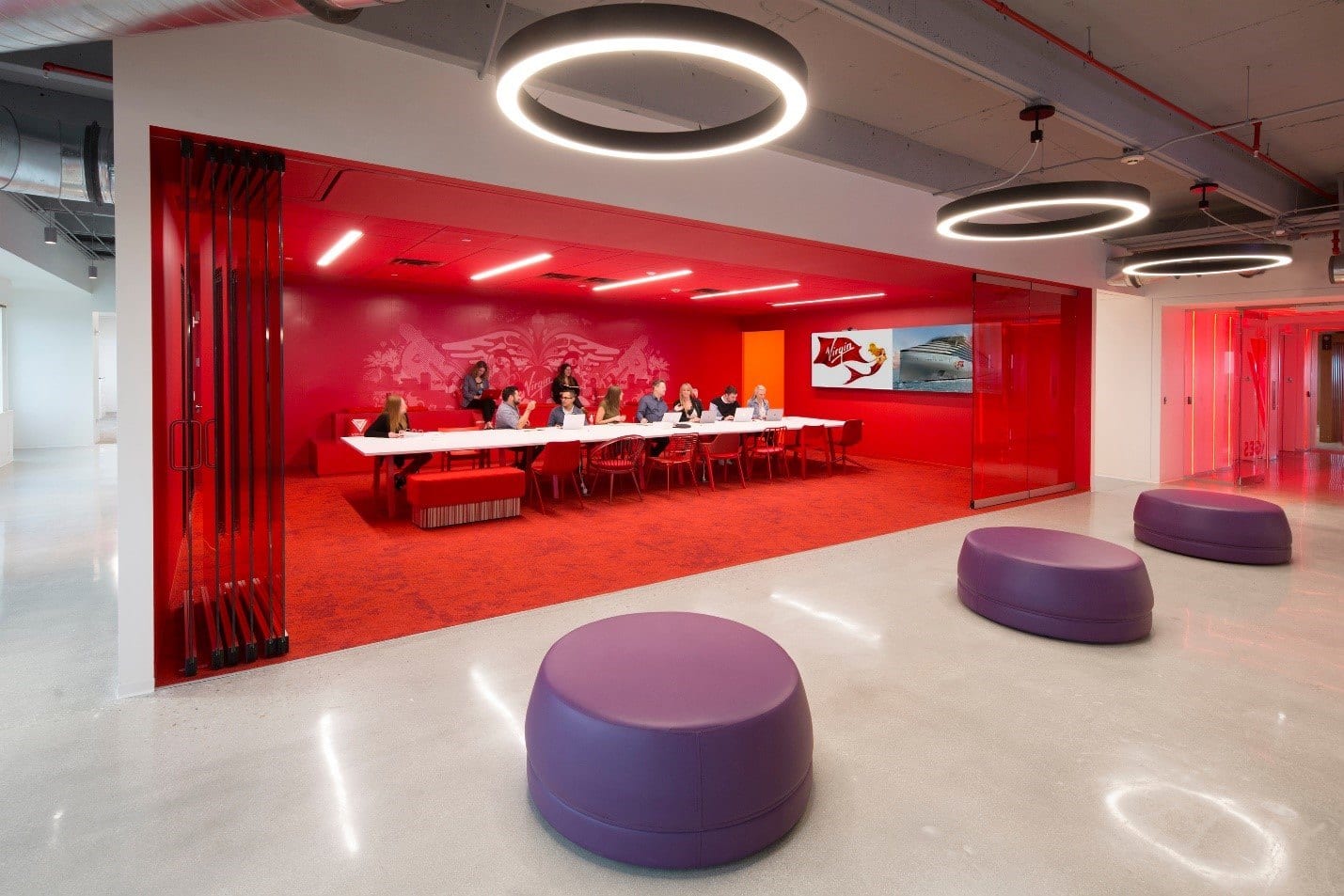
Virgin Voyages, Plantation, Florida. Photography © Robin Hill.
We are wired to enjoy our connection with natural systems, but some conditions, like those experienced by shift workers, create a negative impact because they are out of sync with circadian rhythm. Awareness of natural processes, including seasonal and temporal change is important for those who are working non-conventional hours or in windowless environments. The biggest impact is on emotions and moods.
Before the Industrial Revolution, the majority of people were highly attuned to the weather, the seasons, and the cycles of the natural world. As their descendants, we are conditioned to derive comfort and pleasure from maintaining that awareness even though up to 90% of our time is now spent indoors.
Providing access and connection to changing conditions outdoors is another reason to provide opportunities for workers to easily see outside. Alternatively, at a minimum, we can create an environment that changes to reflect outdoor conditions and keeps people connected to the seasons as well as circadian rhythm through the use of varying light intensity and color temperatures that mimic daylight.
Biomorphic Forms and Patterns
Biomorphic forms and patterns can be expressed in a multitude of ways, from the smallest mosaic tile layout to the exposed structural system of a building. Our eye delights in forms and patterns which remind us of arrangements that persist in nature.
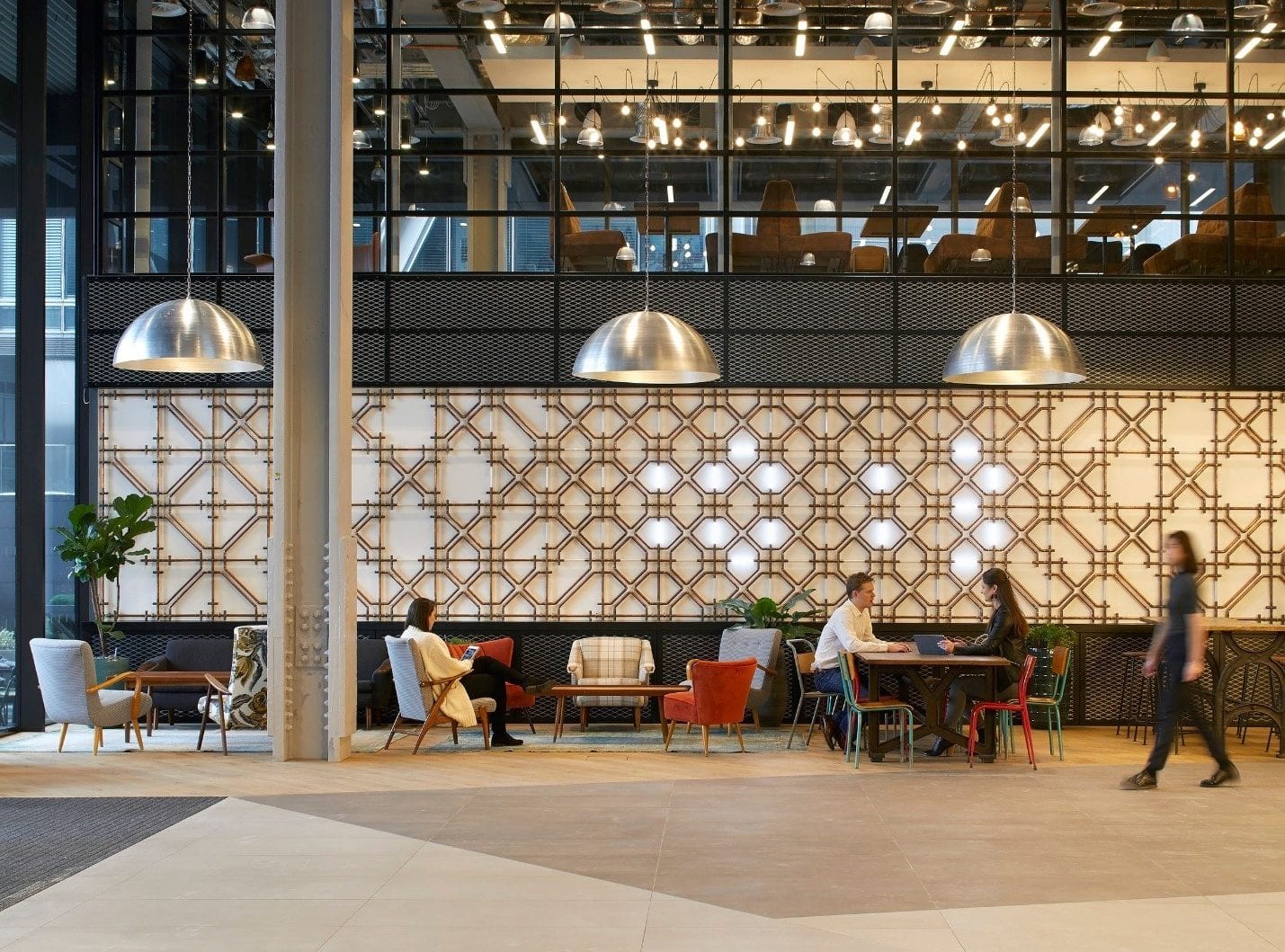
Confidential Client, London.
Another visual cue to nature is the use of materials and design elements that reflect local ecology or geology and create a distinct sense of place. When designing to express a place and time, we can reference some aspect of the project location such as the use of native building materials and methods. The science behind designing for place supports decreased diastolic blood pressure and improved creative performance, emotional responses, mood, and greater comfort.
Complexity and Order
Our delight in patterns is also reflected in our instinct to observe and enjoy a hierarchal order of space and design. We respond positively to rich sensory information derived from spatial hierarchies similar to those encountered in nature. Science confirms the reduction of stress in environments that express spatial hierarchy. The use of material textures and contours, auditory stimuli, fabrics, façade materials, and pedestrian walkways in both the interior and exterior environments of a structure are all ways of celebrating hierarchy.
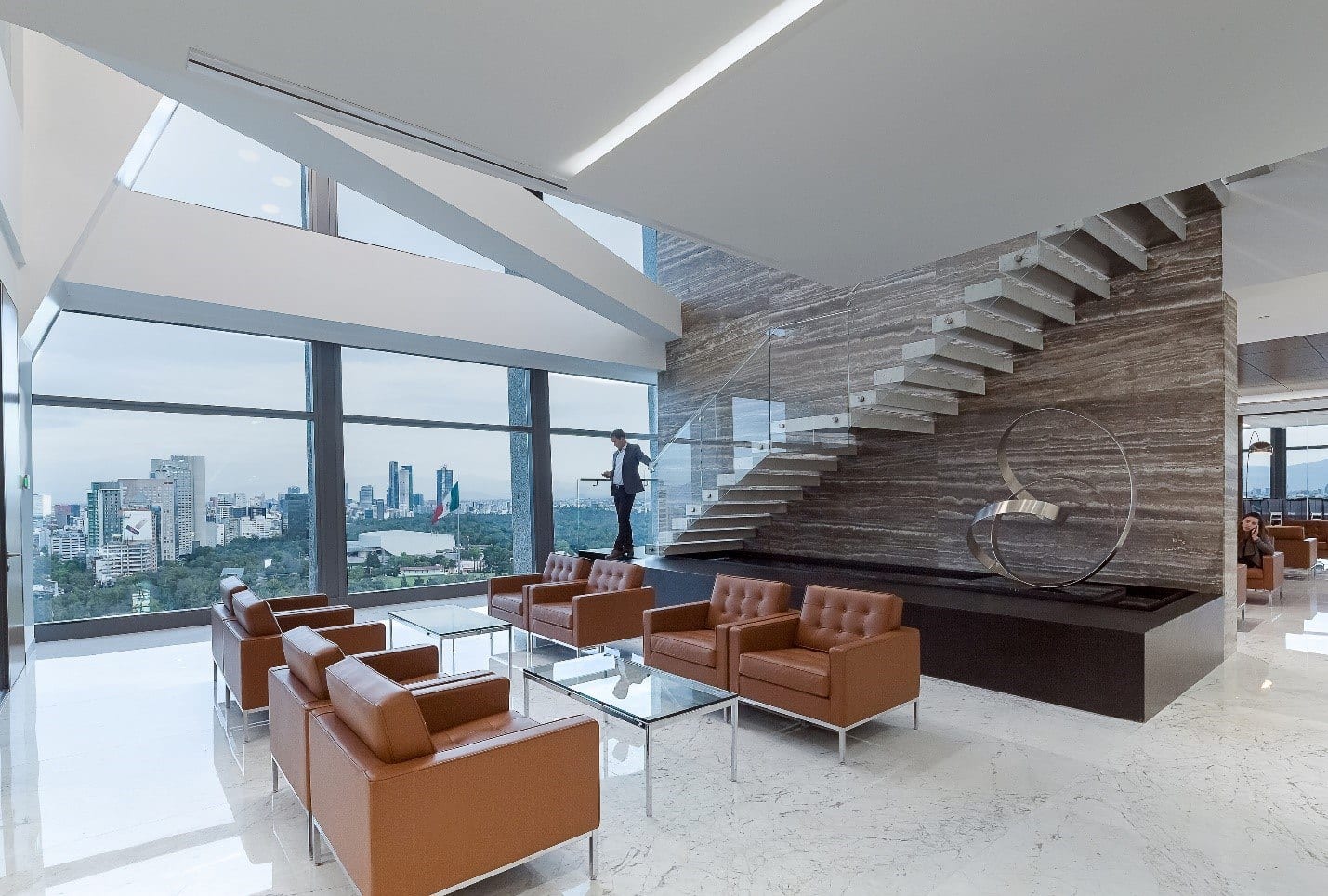
Baker McKenzie, Mexico City. Photography © Hector Armando Herrera.
Architects typically negotiate a variety of scales, from massive structures down to the human hand. By appreciating the impacts of hierarchy we can find ways to create and emphasize complexity and order relative to human neuroscience.
Risk and Peril
Finally, we examine the biophilic impact of risk and peril. This is not an area routinely considered as a design objective, although users delight in an identifiable threat coupled with a reliable safeguard—the result is an influx of dopamine, a pleasure response. Even the most skittish may enjoy the occasional thrill of a little risk or peril as long as it is not truly dangerous! We innately perceive a threat before our higher brain can explain away the danger, so we get a little spike of dopamine when something gets our attention and makes us more alert.
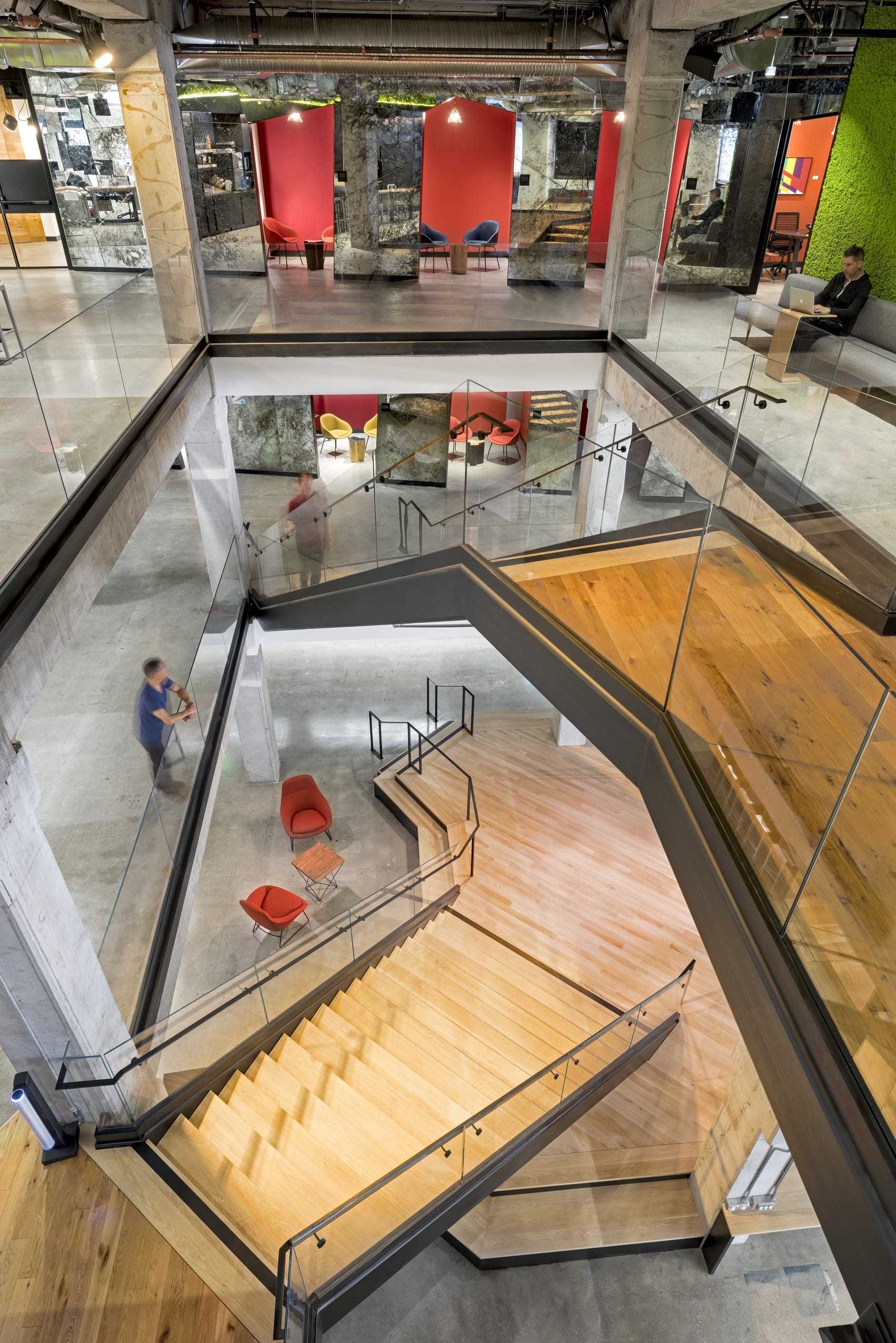
Confidential Client, San Francisco. Photography © Jasper Sanidad.
Spatial risks can involve heights and gravity; perceived risks include getting wet or a loss of control. Examples of these triggers in environments are double height atriums with balconies or catwalks; architectural cantilevers; objects that appear to be defying or testing gravity; and transparency in flooring or railings.
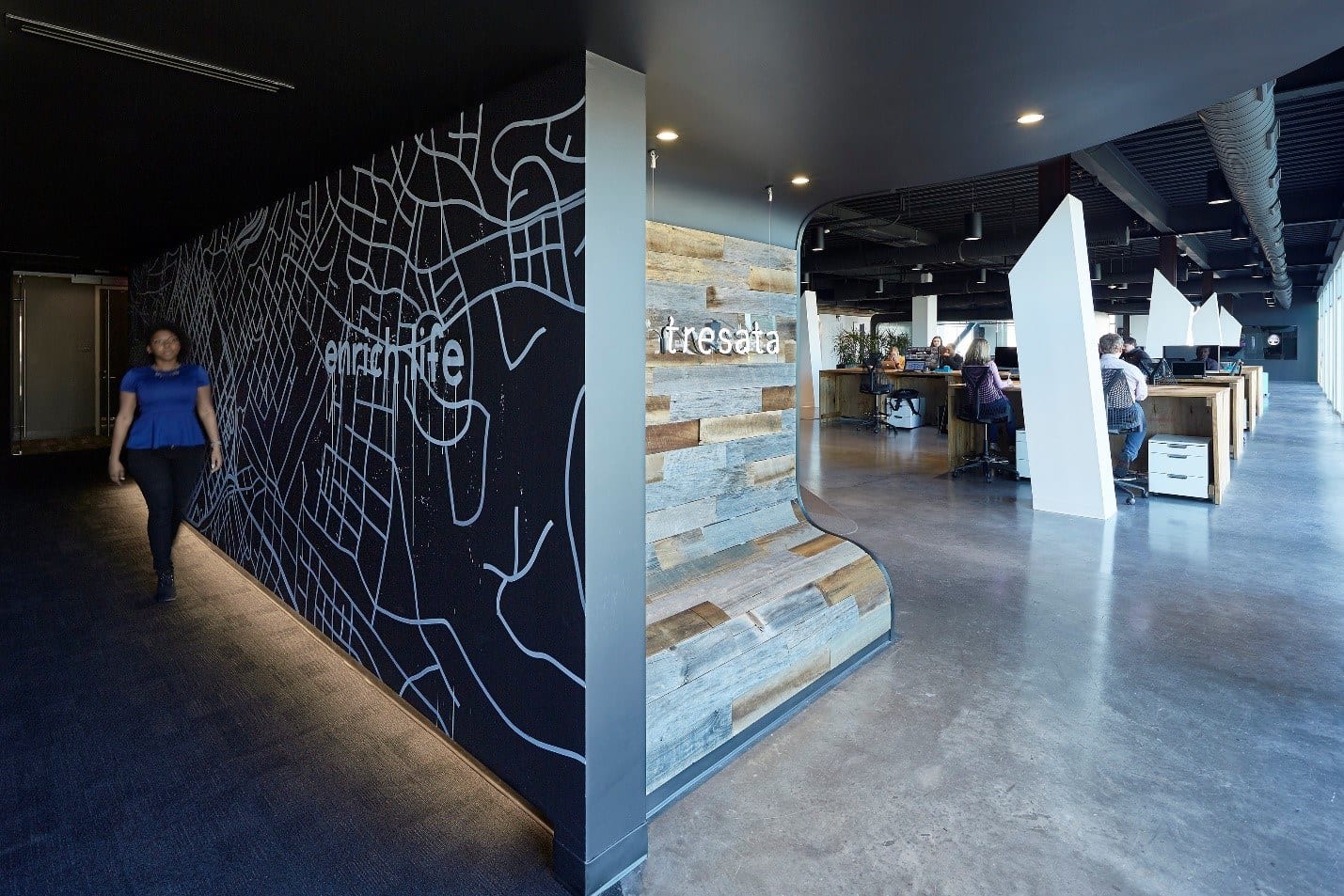
A dark portal passage lit only by floor lights leads to reception and a wall of floor-to-ceiling windows. Tresata Relocation, Charlotte, North Carolina. Photography © Monica Slaney.
Conclusion
A knowledge of the impact that biophilic patterns have on human perception, performance, and wellbeing, and the science behind their power is an advantage IA designers bring to the design process that will directly affect the quality of the human experience in the built environment. And designing for the human experience will surely be a key strategy and central focus in 2019.


